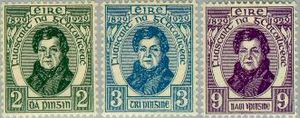Catholic emancipation facts for kids

Catholic Emancipation or Catholic Relief was a big change in Great Britain and Ireland. Later, it continued in the United Kingdom. This process happened in the late 1700s and early 1800s.
It was all about reducing and removing many rules that limited Roman Catholics. These rules were put in place by laws like the Act of Uniformity, the Test Acts, and the penal laws. Catholics often had to take oaths that went against their faith, which made life very difficult for them.
The process of removing these strict laws began in 1766. The most important step was the Roman Catholic Relief Act 1829. This act took away most of the major limits on Roman Catholicism in the United Kingdom.
Contents
What Was Catholic Emancipation?
Catholic Emancipation was a movement to give Roman Catholics more rights. For a long time, laws in Great Britain and Ireland limited what Catholics could do. They couldn't hold certain jobs or be part of the government. This was because of old laws that favored the Protestant Church.
The goal of emancipation was to remove these unfair rules. It aimed to make Catholics equal citizens. This meant they could participate fully in society.
Why Were Catholics Restricted?
After the Protestant Reformation, many countries in Europe had laws that favored one religion. In Britain and Ireland, laws were made to support the Protestant Church. These laws were called the Penal Laws in Ireland. They also included the Act of Uniformity and the Test Acts.
These laws made it hard for Catholics. For example, they couldn't:
- Hold public office (like being a Member of Parliament).
- Serve in the army or navy.
- Go to certain universities.
- Practice their religion freely in some ways.
Catholics also had to take special oaths. These oaths often denied parts of their Catholic faith. This made it impossible for many to follow the laws without going against their beliefs.
How Did It Happen?
The movement to remove these restrictions started slowly. People began to realize that these laws were unfair. Many Catholics and some Protestants worked together for change.
The first steps to ease the rules happened in 1766. Over the next few decades, more small changes were made. These changes gradually gave Catholics more freedom. However, the biggest restrictions remained.
The Relief Act of 1829
The most important moment for Catholic Emancipation was in 1829. This is when the Roman Catholic Relief Act 1829 was passed. This act was a huge victory for Catholics.
A key figure in this success was Daniel O'Connell. He was an Irish Catholic lawyer and politician. O'Connell led a strong campaign for Catholic rights. He organized many people and used peaceful methods to push for change. His efforts helped convince the British government to pass the act.
The 1829 act removed most of the remaining limits on Catholics. They could now:
- Become Members of Parliament.
- Hold almost any public office.
- Vote in elections (if they met other requirements).
This act was a major step towards religious equality. It showed that people could fight for their rights and win.
Images for kids
See also
 In Spanish: Emancipación católica para niños
In Spanish: Emancipación católica para niños


